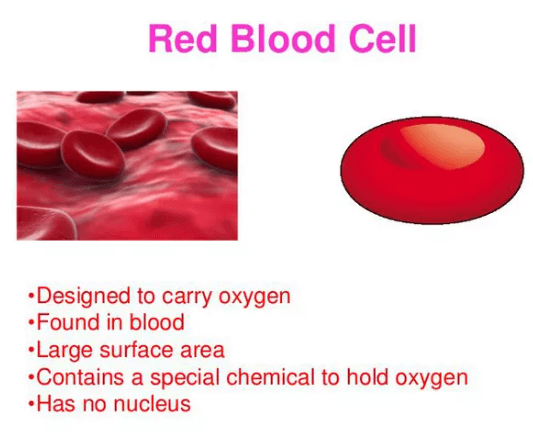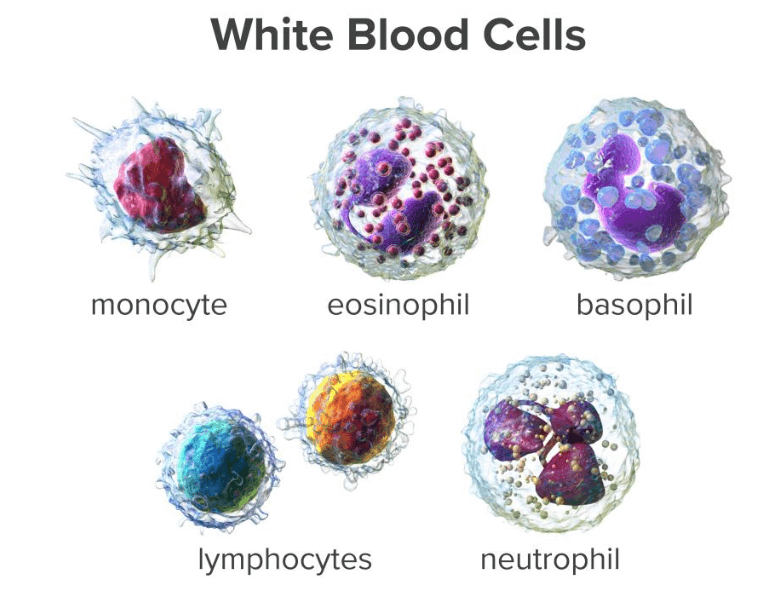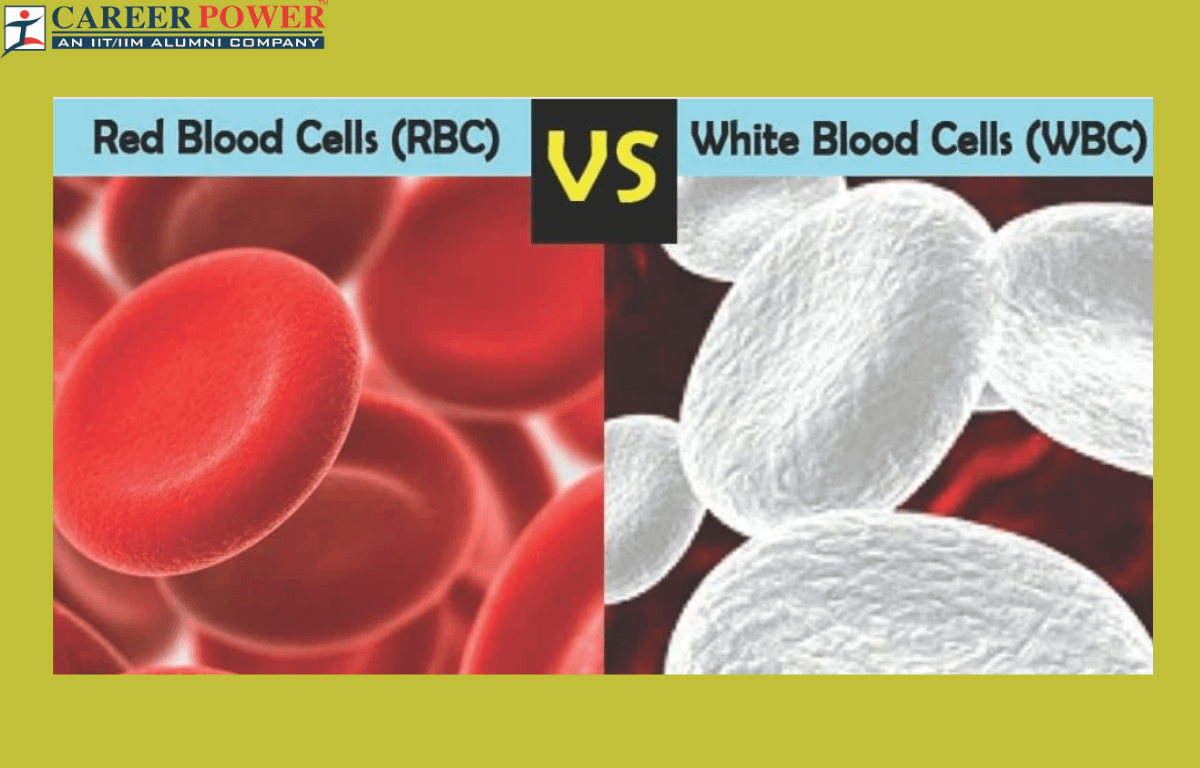Blood is composed of Red Blood Cells (RBCs) and White Blood Cells (WBCs), among other components. RBCs, also known as erythrocytes, transport oxygen from the lungs to the body tissues. While WBCs on the other hand are known as leukocytes, and play a crucial role in the immune system, defending the body against infections. Both types of cells are suspended in plasma, a yellowish fluid that carries nutrients, hormones, and waste products throughout the body. Here we have discussed a few differences between red blood cells and white blood cells below in the article.
RBCs and WBCs
Both RBC and WBC are two main types of cells found in the blood. A key difference between RBC and WBC is their function. Red blood cells primarily carry oxygen from the Lungs to the body tissues, while white blood cells on the other hand are essential for the immune system, defending the body against infections and diseases.
What are RBCs?
Red blood cells (RBCs), also known as erythrocytes, are essential components of the human circulatory system. Their primary function is to transport oxygen from the lungs to various tissues and organs in the body and carry carbon dioxide, a waste product, back to the lungs for exhalation. RBCs are unique due to their biconcave disc shape, which provides a large surface area for oxygen exchange. These cells lack a nucleus, enabling them to accommodate more hemoglobin, a protein that binds to oxygen molecules.

The production of RBCs, called erythropoietin, which is released by the kidneys in response to low oxygen levels in the blood. The average lifespan of an RBC is about 120 days, after which they are broken down and recycled by the spleen and liver. RBC count and hemoglobin levels are crucial indicators of a person’s overall health, with abnormal values often pointing to underlying medical conditions such as anemia or polycythemia. Maintaining a proper balance of red blood cells is vital for ensuring efficient oxygen transport, and supporting overall bodily functions and well-being.
What are WBCs?
White Blood Cells (WBCs), also known as Leukocytes, are essential components of the immune system, defending the body against infections and diseases. These specialized cells are produced in the bone marrow and are found circulating in the bloodstream and lymphatic system. There are several types of white blood cells, including neutrophils, lymphocytes, monocytes, eosinophils, and basophils, each with distinct functions in immune response.

Neutrophils are the most common type of WBCs and are the first responders to infections, engulfing and destroying bacteria. Lymphocytes, including T cells and B cells, play a central role in specific immune responses. T cells directly attack infected cells, while B cells produce antibodies that neutralize harmful substances. Monocytes help to clean up dead or damaged cells, while eosinophils and basophils are involved in allergic reactions and defense against parasites, respectively.
The balance and proper functioning of these white blood cells are crucial for maintaining a healthy immune system. Abnormalities in WBC counts can indicate various health conditions, making them essential indicators for diagnosing illness and monitoring overall health.
Difference Between RBC and WBC
White blood cells (WBCs) and red blood cells (RBCs) are both essential components of the blood, but they serve different functions in the body. In summary, WBCs play a key role in the immune system by defending the body against infections, while RBCs are responsible for oxygen transportation to body tissues and carbon dioxide removal from tissues.
| Difference Between RBC and WBC | ||
| Aspects | Red Blood Cells (RBCs) | White Blood Cells (WBCs) |
| Function | The red blood cells carry oxygen and remove carbon dioxide. | The white blood cells are parts of the immune system and fight infections. |
| Color | The RBCs are red in color. | The WBCs are usually colorless. |
| Nucleus | The red blood cells do not contain any nucleus (in mammals). | The nucleus is present in the white blood cells. |
| Shape | The red blood cells are of biconcave disc shape. | The white blood cells are of various shapes (spherical, irregular, amoeboid). |
| Number | Red blood cells are millions in a drop of blood. | Fewer than RBCs. |
| Lifespan | The lifespan of red blood cells is about 120 days. | The lifespan of white blood cells is a few days to several months. |
| Production | Bone marrow. | Bone marrow and lymphoid tissues. |
| Types | One type | The white blood cells are of several types (neutrophils, lymphocytes, etc). |
| Movement | The red blood cells cannot move on their own. | The white blood cells can move through amoeboid movement. |
| Response to Infection | The red blood cells are not directly involved in response to infection. | The white blood cells are actively involved in the immune response. |
Functions of RBC and WBC
Red blood cells (RBCs) and white blood cells (WBCs) serve distinct functions in the human body. Both red blood cells and white blood cells are essential for maintaining overall health and proper functioning of the human body.
Functions of Red Blood Cell
- Oxygen Transport: Red blood cells (RBCs) contain hemoglobin, a protein that binds with oxygen in the lungs and carries it to tissue and organs, ensuring proper oxygen supply throughout the body.
- Carbon Dioxide Transport: Red blood cells RBCs also help in the transportation of carbon dioxide, a waste product of metabolism, from the tissues back to the lungs, where it is exhaled from the body.
- Maintaining pH Balance: The red blood cells play a role in maintaining the body’s pH balance, which is essential for normal cellular functions.
Functions of White Blood Cell
- Immune Response: The white blood cells are a vital part of the immune system, defending the body against infections, bacteria, viruses, and other foreign invaders. They can engulf and digest microorganisms and produce antibodies to neutralize harmful substances.
- Inflammation: WBCs are involved in the inflammatory response, which is the body’s natural defense mechanism against injury, and infection. They help in the repair process and eliminate harmful agents.
- Detecting and fighting diseases: White blood cells play a crucial role in detecting and fighting diseases, including various types of cancers, by identifying and destroying abnormal or mutated cells.



 50 Vegetables Name for Kids in English a...
50 Vegetables Name for Kids in English a...
 Food Chain: Definition, Types, Examples,...
Food Chain: Definition, Types, Examples,...
 Human Respiratory System: Definition, Di...
Human Respiratory System: Definition, Di...













